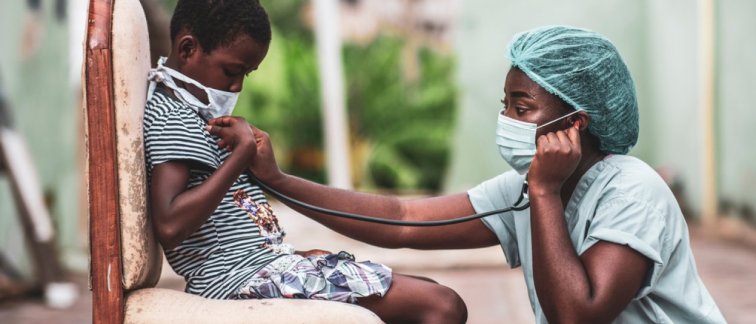A study conducted in four African (Kenya, Uganda, Burkina Faso, Malawi) and two Asian countries (Pakistan and Bangladesh) has appeared in The Lancet Global Health. The researchers followed a group of 3,101 children who ended up in the hospital with an acute illness. At different times they were monitored to see how they were doing. Of this cohort, 350 children died after being admitted; 48% of them within 6 months of discharge from the hospital.
"We had divided the group into three categories: not malnourished, moderately malnourished and severely malnourished. Severely malnourished children were five times more likely to die. What surprised us was that of all the children who died, almost half died after discharge from the hospital," says Voskuijl from Queen Elizabeth Central Hospital in Blantyre, where he leads Malawi's CHAIN study.
Follow-up study
Why is it that so many children die after being discharged from the hospital? That is the subject of a follow-up study, says Voskuijl. Interviews with the families of these children have already provided the CHAIN researchers with the necessary answers. "It probably has to do with the fact that families sometimes have trouble getting enough food. Poor access to medical care and poorly educated parents also play a role. When the child is in the hospital, these risk factors for mortality 'disappear' temporarily. But after returning home, they are there again."
Interventions with families
In the meantime, the researchers are also thinking about interventions in the families' homes. Voskuijl cites the example of a health worker, who visits the child at home after hospitalization. "Or we send an email or an app to see how things are going, along with specific questions about any health issues. With that, you can then put a toll-free number where the parents can call in case of problems. We also want to start testing wearables that allow us to monitor the child remotely." In addition, the researchers want to find out why parents decide whether or not to go back to the hospital after their child has been there. And whether they can influence the decision not to go back.
Another important factor that can reduce the mortality rate among these children is the physical and mental health of the mother. Voskuijl: "Mothers who feel good about themselves and are mentally strong make good decisions for their children. Therefore, support for the mother is very important. Think for example of help in solving money problems."
Vicious circle of vulnerability
The core of the problem is: much attention is paid to the physical condition of acutely ill children, but hardly any consideration is given to where they come from today and the factors there that make them vulnerable. Factors like poverty, access to care, living conditions, and hygiene. "These children end up in a vicious cycle of vulnerability and sometimes die," says Ezekiel Mupere, head of the Department of Pediatrics at Makerere University in Uganda. "As much energy should be put into the factors that contribute to this vulnerability."
Predicting risk of death
In The Lancet Global Health, the researchers argue that hospitals need to look more closely at a child's risk of dying. Policy should be based on that. For example, upon discharge from the hospital, the risk of death should be calculated. This can be done using a mathematical calculation model that was co-developed for CHAIN by Daniëlla Brals, econometrician at the Amsterdam Institute of Global Health and Development (AIGHD). The mathematical model can also indicate which children have a very low risk of death on admission. This, in turn, helps to better distribute scarce healthcare personnel and resources among little patients who have a higher chance of dying.
More information (in Dutch) on the Amsterdam UMC webpage.

